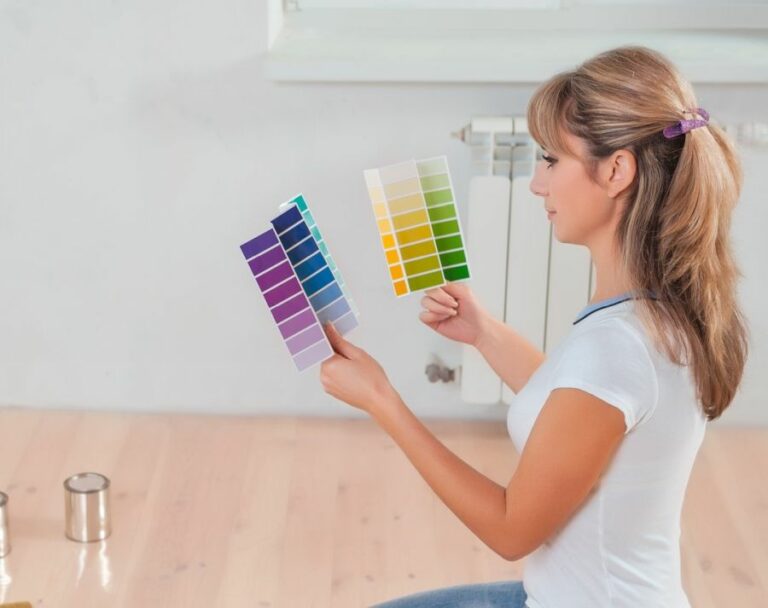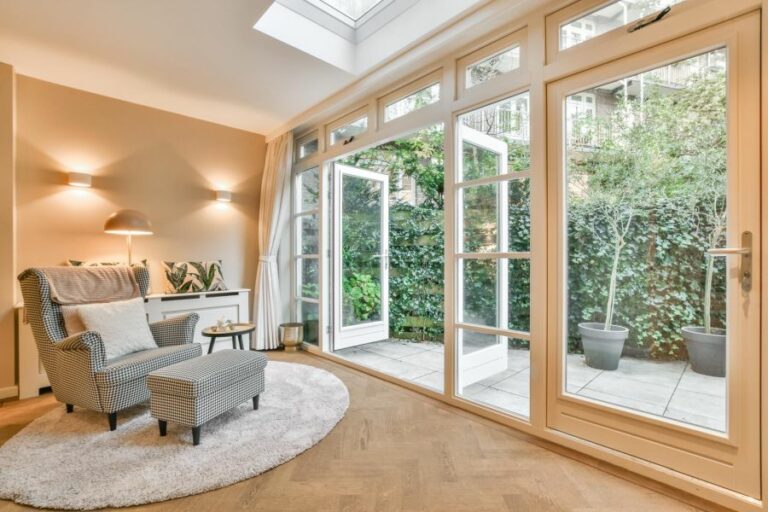Reflective Indoor Paint Varieties, 25 Things You Should Know
Reflective indoor paint varieties can truly revolutionize the aesthetics and functionality of your spaces. As experts in the world of paint, we are equipped to guide you through the extensive range of options available to suit your needs.
Reflective indoor paint varieties:
Reflective indoor paint varieties include metallic paints, high-gloss and semi-gloss paints, and reflective finish paints. These paints contain particles that reflect light, enhancing natural illumination and reducing energy consumption. They are popular in homes and commercial spaces for their aesthetic and energy-saving benefits.

Ready to learn more about reflective indoor paint varieties? Our in-depth guide explores the different types, their benefits, and tips on how to choose the perfect one for your space. Keep reading to enhance your home’s aesthetics and energy efficiency!
Contents
- 1 Assorted Indoor Reflective Paint Options
- 2 Top Reflective Paint Colors: Unveiling the Best
- 3 Discover the Highest Light Reflecting Wall Paint
- 4 Evaluating Least Light-Reflective Paint Options
- 5 Uncovering the Most Reflective Paint Colors
Assorted Indoor Reflective Paint Options
The use of reflective indoor paint is becoming increasingly popular in homes and commercial spaces. The ability of these paints to enhance natural light while reducing the need for artificial lighting is an appealing feature.
• The Science Behind Reflective Paints
Reflective paint contains particles that reflect, rather than absorb, light. These particles, often made from metal or glass, work to redirect incoming light back into the room. This increases the overall brightness and illumination without relying on additional light sources.
A study conducted by the Lawrence Berkeley National Laboratory found that reflective paint can significantly reduce the amount of energy needed to light a space, ultimately leading to energy-efficient spaces and lower energy bills.
• Types of Reflective Indoor Paint
– Metallic Paints
Metallic paints often contain fine metallic particles, such as aluminum or mica, to create a reflective surface. These paints come in a wide range of colors and can be used to achieve a shiny, metallic finish on various surfaces.
Metallic paints are particularly popular for use on accent walls and feature areas, as they create a visually striking appearance.
Pros of Metallic Paints
- Available in a wide range of colors
- Striking visual appearance
- Reflective properties enhance natural light
Cons of Metallic Paints
- Can be more difficult to apply than standard paint
- May require a special primer or base coat
- Can be challenging to touch up or repair
Application Tips
- Use a primer or base coat specially designed for metallic paints.
- Apply thin layers, allowing each coat to dry before applying the next.
- Use high-quality brushes or rollers to minimize streaking and brush marks.
– High-Gloss and Semi-Gloss Paints
High-gloss and semi-gloss paints have a higher sheen level than matte or flat paints, which makes them more reflective. These paints are often used in areas where moisture resistance, durability, and ease of cleaning are crucial, such as kitchens, bathrooms, and trim.
Pros of High-Gloss and Semi-Gloss Paints
- Reflective properties enhance natural light
- Durable and moisture resistant
- Easy to clean
Cons of High-Gloss and Semi-Gloss Paints
- May show imperfections on the surface
- May require multiple coats for optimal coverage
Application Tips
- Prepare the surface by sanding and repairing any imperfections.
- Use a high-quality primer to ensure an even base.
- Apply multiple thin coats, allowing each coat to dry before applying the next.
– Reflective Finish Paints
Reflective finish paints are specifically designed to maximize the reflection of light. Some of these paints contain glass beads, which help to scatter light and create a highly reflective surface.
Reflective finish paints are ideal for use on ceilings or in darker areas of a home where the enhancement of natural light is desired.
Pros of Reflective Finish Paints
- Maximizes light reflection
- Can improve visibility in darker areas
- Energy-efficient
Cons of Reflective Finish Paints
- Limited color options
- Can be more expensive than other paint options
Application Tips
- Follow the specific application instructions provided by the paint manufacturer.
- Use a high-quality brush or roller to ensure an even coat.
- Apply multiple thin coats for optimal reflection.
• Choosing the Right Reflective Indoor Paint
When selecting reflective indoor paint, consider the following factors:
- The desired level of light reflection
- The area and surface being painted
- The overall aesthetic and color preferences
By researching and comparing various types of reflective indoor paint, homeowners and business owners can find the most suitable option for their specific needs, ultimately leading to brighter, more energy-efficient spaces.
Top Reflective Paint Colors: Unveiling the Best
Reflective color paint plays a crucial role in improving overall visibility, safety, and aesthetics in various applications. However, selecting the best reflective color paint can be quite challenging, given the wide range of options available in the market.
• Reflective Paint Properties: What to Look For?
Numerous factors affect the performance and suitability of reflective color paints for different applications. Here are some key aspects to consider when selecting the best paint:
– Reflectivity
The primary purpose of reflective paint is to enhance visibility, especially during nighttime or low-light conditions. Thus, the level of reflectivity plays a significant role in determining the effectiveness of the paint. Generally, higher reflectivity means better visibility.
Look for paints that have high refractive index (RI) values, which indicate strong reflective capabilities.
– Durability
High-quality reflective color paint should withstand harsh weather conditions and resist fading, chipping, and peeling. Opt for paints that use a durable, weather-resistant binder to ensure their longevity.
– Ease of Application
Choose reflective color paints that can be easily applied on various surfaces, such as metal, wood, or plastic. The paint should be compatible with both spray and brush application techniques.
– Eco-Friendliness
Environmentally-friendly options, such as low-VOC (volatile organic compound) or water-based paints, should be considered for their reduced environmental impact.
• Considerations for Best Reflective Color Paint Selection
The choice of the best reflective color paint depends on the intended application and specific requirements. Here are some common use cases and recommended color options:
– Traffic and Road Safety
For road markings, traffic signs, and other transportation-related applications, white, yellow, and red are the most commonly used reflective colors. These colors are highly visible, even under low-light conditions, and comply with regulatory requirements.
- White: Universally accepted for road markings, white reflective paint offers excellent contrast with dark surfaces, making it ideal for lane markings and pedestrian crossings.
- Yellow: Often used for cautionary signs and road markings, yellow reflective paint stands out against the background and effectively captures attention.
- Red: Indicative of stop signs and danger zones, red reflective paint is commonly used in applications where maximum visibility and attention are required.
– Outdoor Advertising
In the case of billboards, storefronts, and other advertising materials, choosing bright, vibrant reflective colors can help grab the attention of potential customers. Some popular color options include:
- Blue: A widely preferred color for outdoor advertising, blue reflective paint is known to evoke feelings of trust and reliability.
- Green: Representing growth and abundance, green reflective paint can be an ideal choice for businesses related to health, wellness, and eco-friendliness.
- Orange: Striking and attention-catching, orange reflective paint is excellent for promoting sales, offers, and discounted items.
– Architectural and Decorative Applications
When using reflective paint for building facades, interior walls, and other architectural purposes, consider colors that complement the existing design and enhance visual appeal.
- Black: Providing a sleek and elegant appearance, black reflective paint can work well for modern and minimalist interior designs.
- Silver: Conveying a sense of luxury, silver reflective paint can be utilized to highlight specific architectural features or provide an interesting contrast against dark backgrounds.
It is worth noting that custom-tailored color options can be created by many paint manufacturers to address specific needs.
• Personal Recommendations and Experiences
From personal experience, I would recommend the following reflective color paints:
- 3M Scotchlite Reflective Material: A reliable choice for various applications, 3M Scotchlite offers high performance, durability, and a wide range of color options.
- Rust-Oleum Reflective Finish Spray Paint: This easy-to-use spray paint can be applied to various surfaces and offers a durable, weather-resistant finish.
However, always test a small, inconspicuous area before applying the paint to ensure compatibility and desired results.
• Final Thoughts
Choosing the best reflective color paint depends on multiple factors, including reflectivity, durability, application method, and intended use.
The key is understanding your specific requirements and selecting the most suitable color option that meets those needs. By following this guideline and considering personal recommendations, you can achieve optimal results and create enhanced visibility and aesthetics in your projects.
Color | Reflectivity | Use Cases |
|---|---|---|
White | High | Walls, ceilings, exteriors, safety markings |
Yellow | Medium-High | Traffic signs, safety markings, vehicles |
Orange | Medium | Construction signs, safety vests, road barriers |
Red | Low-Medium | Stop signs, fire equipment, emergency vehicles |
Blue | Low | Mass transit, police vehicles, informational signs |
Green | Low | Emergency exit signs, park signs, recycling containers |
Discover the Highest Light Reflecting Wall Paint
• Understanding Light Reflectivity
Light reflectivity in paint refers to the amount of light a particular paint color reflects back to the environment. The higher the light reflectivity, the more the paint helps in enhancing the natural lighting in a room.
Light-reflective paints are especially useful for small or dark rooms, as they can help create the illusion of a larger space and make the area feel brighter and more inviting. The light reflectivity of paint color is measured on a scale of 0 to 100, with 100 being the most reflective. Dulux
• The Role of Color and Finish
When choosing paint with high light reflectivity, the color, and finish play a significant role. Lighter colors with a higher LRV (Light Reflectance Value) tend to be more reflective than darker colors.
White and off-white shades, for example, typically have a higher LRV compared to darker colors like navy blue or forest green.
In addition to color, the finish of the paint also affects its reflective properties. Paint finishes are available in several different sheens, from matte to high gloss. High-gloss finishes tend to be the most reflective due to their smooth, mirror-like surface.
• Top Light Reflective Wall Paints
Based on my experience, these are some of the most light-reflective wall paints available in the market:
1. Benjamin Moore Aura
Benjamin Moore’s Aura line offers exceptional performance with its proprietary Color Lock technology, which helps deliver vibrant and lasting colors.
For a highly reflective finish, opt for their semi-gloss or high-gloss sheen. Aura paint is also known for its excellent coverage, making it a popular choice among professionals.
2. Sherwin-Williams Duration Home
Duration Home by Sherwin-Williams is another high-quality paint that offers a durable, washable finish with excellent light reflection. This paint line is available in matte, satin, semi-gloss, and high-gloss finishes, giving you options to select the sheen that best suits your needs.
3. BEHR Premium Plus Ultra
BEHR is a popular paint brand known for its affordable and high-quality products. The Premium Plus Ultra line offers excellent coverage and light reflection, particularly in its semi-gloss and high-gloss finishes.
This paint line also features advanced stain-blocking technology, making it an ideal choice for areas that require frequent cleaning.
4. PPG Diamond
PPG Diamond is a top-quality paint that boasts outstanding washability and durability while offering excellent light reflection. This paint is available in a variety of finishes, including flat, eggshell, satin, semi-gloss, and high-gloss, giving you the flexibility to choose the sheen that best suits your needs.
5. Valspar Signature
Valspar’s Signature line offers excellent coverage and a long-lasting finish with good light reflection. This paint is available in a variety of finishes, including satin, semi-gloss, and high-gloss. Valspar Signature also features ScuffShield Technology, making it a great choice for high-traffic areas of your home.
• Tips for Choosing the Right Paint
When selecting the most light-reflective wall paint for your project, it’s essential to consider the specific needs of the space. Here are some tips to help you make the right decision:
- Evaluate the room’s natural lighting: Consider the amount of natural light that enters the room when selecting a paint color and finish. If the room has limited natural light, opt for a lighter color and higher sheen to maximize light reflection.
- Consider the room’s function: The paint’s durability and washability are important factors to consider based on the room’s primary function. For instance, high-traffic areas like hallways and kitchens may benefit from a more durable, washable paint finish.
- Test paint samples: Before committing to a specific color and finish, it’s a good idea to paint a small sample on the wall to see how it looks in different lighting conditions. This can help you make a more informed decision when selecting the most light-reflective wall paint for your space.
- Seek professional advice: If you’re still unsure about the best paint for your needs, consider consulting a professional paint store or contractor. They can provide expert advice based on your particular project’s requirements.
In conclusion, choosing the most light-reflective wall paint involves evaluating factors like color, finish, the room’s function, and natural lighting. Brands such as Benjamin Moore, Sherwin-Williams, BEHR, PPG, and Valspar offer quality paint options with high light reflectivity.
By considering these factors and seeking professional advice as needed, you can transform your space into a well-lit, inviting environment.
Evaluating Least Light-Reflective Paint Options
It’s essential to understand the world of paint that reflects the least light, also known as low reflective or matte finishes. These finishes are in high demand for various applications, from avoiding glare in photography studios to optimizing projector screens.
• Characteristics of Low Reflective Paint
Low-reflective paint finishes feature a non-glossy or “matte” finish. These paints scatter light in multiple directions, resulting in a soft, non-reflective surface. The main characteristics of these paints are:
- Minimizes Glare: Ideal for reducing light reflection, low-reflective paints decrease the visibility of surface imperfections and create a uniform appearance.
- Aesthetics: These paints provide a subtle, sophisticated look that works well with various interior design styles.
- Easy Maintenance: Low reflective paints are easy to touch up, making them suitable for high-traffic areas where frequent cleaning or touching up may be necessary.
- Versatile Application: They are suitable for various surfaces, including walls, ceilings, furniture, and other items that require minimal light reflection.
– Light Absorbance and Reflection Properties
Low-reflective paints do not fully absorb light; instead, they scatter light in a way that reduces glare and reflection. This property is the main reason such paints are used in rooms where light control is crucial, such as home theaters, photography studios, and galleries.
The Sheen Scale is an essential tool to measure paint reflectance. It ranges from flat, matte paints with low reflectance levels to high-gloss finishes with increased reflectance. Paints with low reflectance levels are more effective in minimizing light reflection.
• Types of Low Reflective Paints
Numerous paint manufacturers create low-reflective paint products, differing in terms of reflectance levels, quality, and application. Some examples include:
– Flat and Matte Finish Paints
Flat and matte finishes are standard low-reflective paints that strive to minimize glare and light reflection, giving a subtle appearance. They are popular for painting walls and ceilings in areas like living rooms, bedrooms, and dining rooms.
– Eggshell Finish Paints
One step above matte finishes, eggshell finish paints are known for their slight sheen, offering a more luxurious feel than flat and matte varieties. This finish is widely used for interior walls but with a touch of sophistication.
– Suede and Textured Finishes
Suede and textured finishes provide depth and visual interest to a surface while maintaining low reflectance levels. These paints are ideal for hiding surface imperfections and creating bold, unique looks.
– Blackout Paint
Blackout paint is a specialized low-reflective paint designed to eliminate light reflection, primarily used in photography studios, home theaters, and other professional applications where light control is critical.
This paint can provide a nearly reflection-free surface, ensuring optimal results in light-sensitive environments. (For instance, Rosco offers a well-regarded blackout paint.)
• Applications of Low Reflective Paints
Low-reflective paints have various applications, catering to the diverse requirements of professional and personal projects:
- Photography Studios: These paints are ideal for creating a controlled lighting environment and preventing glare from interfering with the subject or equipment.
- Home Theaters: By reducing light reflection, low reflective paints enhance picture quality and create an immersive, movie theater-like experience.
- Galleries and Museums: Maintaining an optimal viewing experience for artwork is crucial, making low reflective paint the perfect choice for enhancing the visual appeal and quality of displayed art.
- Interior Design: These paints provide an elegant, subtle appearance and help homeowners create the desired atmosphere and aesthetic in their living spaces.
• Understanding the Significance of Low-Reflective Paints
In conclusion, low-reflective paints play a vital role in various applications due to their ability to minimize light reflection and create uniform, sophisticated finishes.
Understanding the characteristics and types of these paints will help you make informed decisions for your next painting project, whether it be personal or professional.
Remembering the sheen scale and exploring different products on the market will enable you to identify the ideal paint for your specific needs.
Uncovering the Most Reflective Paint Colors
With the continuous advancements in technology, the interest in reflective materials and colors has gained prominence. Highly reflective colors play a crucial role in various applications, from ensuring safety on roads to enhancing the aesthetic appeal of a product.
• Properties of Highly Reflective Colors
– Reflectivity
Reflectivity is the ability of a color to reflect light without transforming or absorbing it. This attribute plays a key role in determining the effectiveness of reflective color. Highly reflective colors bounce back light more efficiently than less reflective colors, thereby increasing their visibility.
– Light Absorption
Highly reflective colors absorb significantly less light energy than other colors. When a color has low absorption levels, it reflects more incident light which contributes to better visibility under various lighting conditions.
– Visible Spectrum
The visible light spectrum contains all the colors that the human eye can perceive. Highly reflective colors usually reside within the visible spectrum, making them easily discernible even in low-light conditions.
• Significance of Highly Reflective Colors
– Improving Visibility
Highly reflective colors are essential in enhancing visibility, particularly in areas where light is scarce and visibility is critical. For instance, using reflective colors on road signs, vehicle markings, and protective clothing ensures that they remain visible at all times, which substantially reduces the risk of accidents.
– Aesthetic Appeal
Colors are often used to improve a product’s visual appeal or to represent a brand’s identity. Reflective colors infuse products with a distinct allure that separates them from their counterparts.
For example, automobile manufacturers often use metallic paint colors, which are reflective, to give the vehicles a unique look that sets them apart from competitors.
– Energy Efficiency
Due to their inherent properties that absorb less light energy, highly reflective colors are excellent for boosting energy efficiency within buildings or other surfaces. The reflection of light by these colors reduces heat gain, as well as the need for cooling, which translates into energy and cost savings.
• Commonly Used Highly Reflective Colors
– White
White is the most reflective color because it reflects all wavelengths of light present in the visible spectrum. White surfaces have the potential to reflect up to 90% of the incident light, making them useful for a wide range of applications, from road markings to solar energy production.
A study conducted by the Lawrence Berkeley National Laboratory highlights the benefits of using reflective white surfaces for energy efficiency.
– Silver
Silver reflects a significant portion of light, particularly in the visible and infrared spectrum. This color is excellent for enhancing visibility as well as solar energy reflection. It finds popular use in the automotive industry as metallic paint, in mirrors, and in solar energy technologies.
– Yellow
Yellow is considered a highly reflective color due to its position within the visible spectrum. It offers better visibility, especially in low-light conditions, and is widely used for road signs, markings, and safety equipment.
• Recommendations for Choosing Highly Reflective Colors
As a person experienced in this area, I recommend the following best practices when selecting highly reflective colors:
- Consider the Application: It is crucial to identify the specific applications for which the color will be used. This should inform the color, its properties, and visibility requirements.
- Understand the Environment: Always consider the environment in which the color will be used. For instance, a color that works exceptionally well in daylight may not work efficiently in darkness or under artificial lighting.
- Opt for Custom Solutions: Engage with professionals who can provide custom reflective color solutions, as this enables the selection of the most suitable option for your needs.
- Adhere to Safety Standards: It is critical to abide by relevant safety standards, regulations, and guidelines when selecting reflective colors.
In conclusion, highly reflective colors serve an essential purpose in improving visibility, enhancing aesthetics, and ensuring energy efficiency. White, silver, and yellow are some of the most commonly used reflective colors.
To make an informed choice, it is essential to understand the application, environment, and applicable standards. By doing so, you can improve the overall look, function, and safety of the products or projects you are working on.







